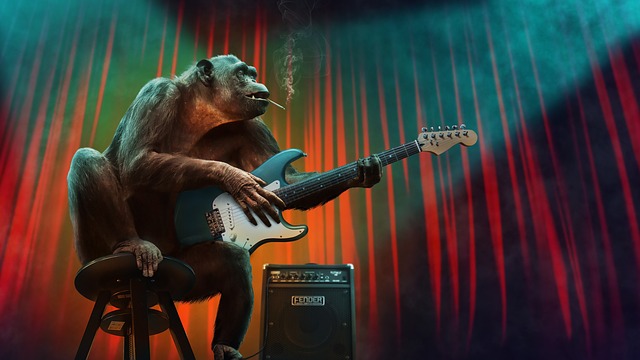
Have you read any of the Redwall series by Brian Jacques?
If you haven’t, it’s a delightful YA series featuring a host of animals behaving like humans, with characteristics, emotions, and sword fights straight out of the Hero’s Journey. And there’s Good vs. Evil in every book. It’s full-on anthropomorphism wielded by a master.
What is anthropomorphism?
Think of your favorite movie as a child. If it was a Disney flick, it likely had animals, inanimate objects, machines, and more as lifelike characters. Anthropomorphism is when you attribute human characteristics, emotions, intentions, behaviors, and actions to non-human entities.
Most humans do this, regardless of culture. It’s something in our psychology that makes us want to explain things using human, lifelike examples. And anthropomorphism is rampant in storytelling. Consider the fables and fairy tales you grew up on. A lot of animals acting like boys and girls, right? There’s the wily fox, the proud lion, the wise owl, and more.
Examples of anthropomorphism
- Lewis Carroll’s Alice’s Adventures in Wonderland
- Kenneth Grahame’s The Wind in the Willows
- C. S. Lewis’s The Lion, the Witch, and the Wardrobe
- A. A. Milne’s Winnie-the-Pooh
Don’t forget Beatrix Potter, J. R. R. Tolkien, E. B. White, or Rudyard Kipling. Non-animal examples include Thomas the Tank Engine by Rev. W. Awdry and the series of Disney’s Cars movies. And remember The Little Engine That Could or The Brave Little Toaster?
Adults have their share of anthropomorphic stories, films, and shows. One of the best anthropomorphic tales for adults is George Orwell’s Animal Farm. And many adults tune in to Family Guy to watch Brian the dog. Also, each of the Transformer movies was rated PG-13, but so many adults had to see them, too.
How to use anthropomorphism in your work
You don’t have to be a children’s author to crank out some amazing anthropomorphic work. But Brian Jacques created some of the best anthropomorphism out there, so we’ll look at his work to help guide you in creating your own.
Here are the basic tenets of creating anthropomorphic characters:
You can anthropomorphize anything physical.
Consider how the French fairy tale (or its Disney adaptation) Beauty and the Beast has regular household items like furniture, teapots, a clock, a candelabra, and more behaving like humans. Each item has characteristics and a distinct personality derived from its physical form. The candelabra is suave and debonair, setting the mood with his personality, while the wardrobe is highly effective and functional. The teapot is a cozy matron who wants to serve everyone.
Likewise, Brian Jacques chose certain animals to represent human characteristics and behaviors. He used woodland animals to depict certain roles. For example, all the bad guys in the series were vermin or predators. Rats, weasels, snakes, carnivorous fish, foxes, a wolverine, and more fought against the heroes who were mice, badgers, otters, hares, birds, hedgehogs, shrews, and other peaceable woodland creatures. Jacques was a master at presenting animals as friend or foe.
You can vary the degree to which your characters act like humans.
In the Redwall series, most of the animals had human characteristics because woodland creatures were the population of its world. But not every creature could talk; it depended on their function in the story. For example, a non-talking horse brought Cluny the Scourge (antagonist) in a cart to Redwall Abbey. The horse was simply transportation.
Jacques depicted the bad guys using animals we see as less than human. He made them primitive and superstitious, while the story’s protagonists are worthy and good (and cute, furry little creatures). Consider how in the book Animal Farm, pigs represent those in power because we usually characterize pigs as being greedy.
You can suggest that human characteristics are universal.
By anthropomorphizing animals and inanimate objects, you can show that human traits are shared by all. It helps you display themes and symbolism in creative ways. Your readers can relate to these characters because they are more human.
Brian Jacques used his series to portray an amazing saga that spanned ages, presenting a long history of woodland creatures across 20+ novels. The creatures never wavered in their human characteristics. Snakes and foxes were always antagonists, and mice and badgers were always courageous and warrior-like.
The Redwall series explored what it means to be "good" versus "evil." Some evil characters displayed the worst human characteristics possible while the main characters had all the positive traits of your basic hero.
You can imagine and tell different stories than if you used only humans.
Consider the movie Finding Nemo. Would that story have been as powerful if it used human beings in the roles? Perhaps not. The story could only have been about fish, but it wouldn’t have been much of one if the sea creatures didn’t talk, act, and feel things like humans.
You can also represent symbolism and morals easier with anthropomorphism. Think of the power of taking a feared creature—in one specific case, a spider—and creating a thoroughly lovable, kind, and humble character who sacrifices her life for others. (Did you pick up on the Charlotte’s Web reference?)
Final thoughts
Anthropomorphic characters can coexist with humans. Disney has several movies that depict animals and humans conversing and solving problems together. For example, the movie The Rescuers has a cast of courageous mice from the Rescue Aid Society (which is uncannily like the United Nations). Two mice fly off on an albatross to rescue the human girl Penny from a nefarious and evil treasure hunter named Madame Medusa.
This is not to suggest that only children's stories can pull off anthropomorphism. Don’t you think it’s about time someone wrote an anthropomorphic novel about the current social and political environment around the world? It’s time to update Animal Farm. Maybe you can write it.

